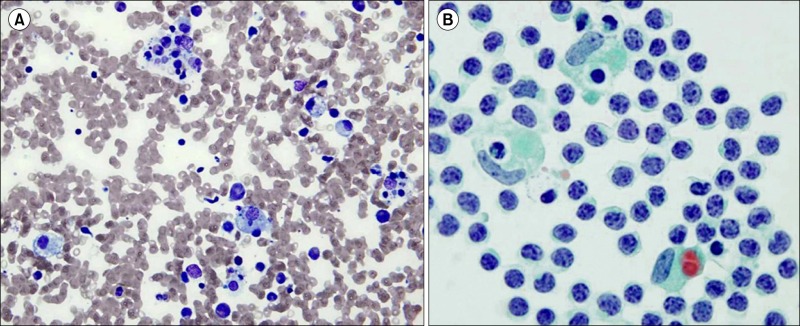
A 1 5/12-year-old girl was admitted with persistent high fever accompanied by mild cough. Physical examination revealed moderate hepatomegaly and splenomegaly. Laboratory tests revealed bicytopenia (hemoglobin level, 10.5 g/dL; white blood cell count, 2.9×109/L; neutrophil count, 0.5×109/L; and platelet count, 14.0×109/L) and prolonged prothrombin time (16.4 sec [normal range, 9.5-13.0 sec]) and activated partial thromboplastin time (47.3 sec [normal range, 24.0-43.5 sec]) with hypofibrinogenemia (plasma fibrinogen level, 0.8 g/L). Blood chemistry results were as follows: aspartate aminotransferase, 2,347 U/L; alanine aminotransferase, 900 U/L; lactate dehydrogenase, 4,350 U/L; triglyceride, 157 mg/dL; and ferritin, >16,500 µg/L. Serology test results were negative for Epstein-Barr virus and cytomegalovirus, and results of genetic mutation associated with hemophagocytic lymphohistiocytosis (HLH) were also negative. Bone marrow findings were compatible with HLH (proliferation of histiocytes, approximately 50% showing hemophagocytosis; A). Chest imaging showed pleural effusion in both lungs. Pleurocentesis was performed before bone marrow examination, and pleural fluid cytology analysis showed evidence of lymphocytes, neutrophils, and erythrocytes being engulfed by histiocytes (B). Careful body fluid investigation is necessary to detect histiocyte-mediated hemophagocytosis when evaluating patients with suspected HLH, to confirm the diagnosis.




 PDF
PDF ePub
ePub Citation
Citation Print
Print


 XML Download
XML Download